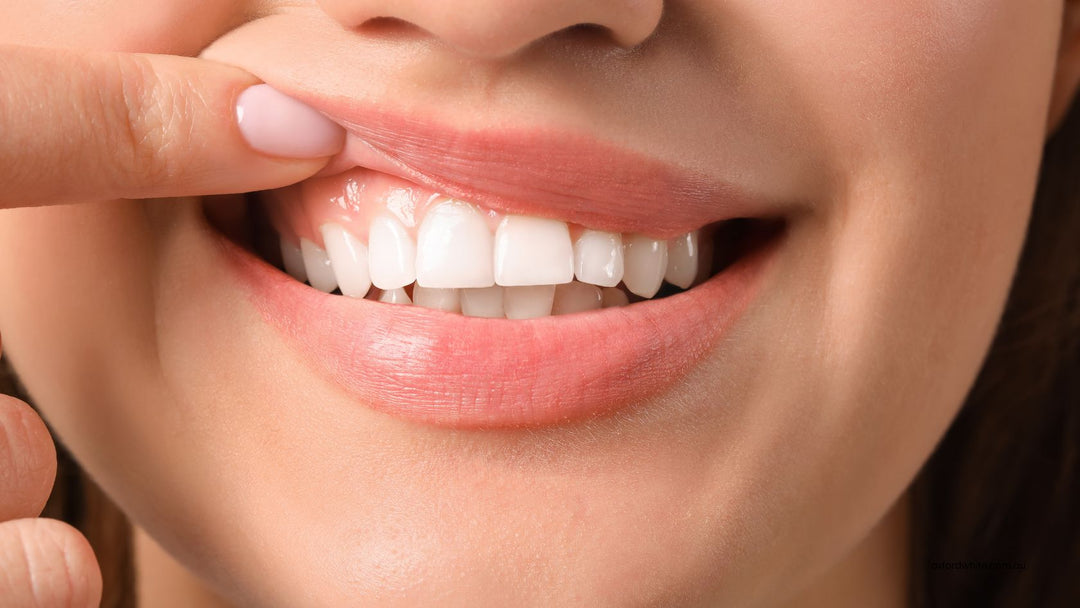Can Teeth Whitening Strips Really Whiten Teeth?
Teeth whitening treatments have become increasingly popular, with many people seeking a brighter, whiter smile. Among the various methods available, whitening strips have gained a strong following due to their convenience and ease of use. But do whitening strips actually whiten your teeth? Let’s dive into the science behind these strips and explore their effectiveness.
How Do Whitening Strips Work?
Whitening strips are thin, flexible pieces of plastic coated with a whitening agent. Traditionally, this agent is hydrogen peroxide or carbamide peroxide, which works by penetrating the enamel and breaking down stains on the surface of your teeth. However, more advanced formulas, such as Oxford White's Advanced Whitening Strips, utilise a cutting-edge combination of PAP (Phthalimidoperoxycaproic acid) and nano-hydroxyapatite.
PAP is a safe and effective, clinically proven alternative to hydrogen peroxide. It whitens teeth without the risks of enamel damage, making it an excellent choice for those with sensitive teeth. On the other hand, nano-hydroxyapatite helps remineralize and strengthen tooth enamel, promoting overall oral health by protecting against sensitivity and decay.
When applied correctly, whitening strips adhere to your teeth, allowing the active ingredients to work. Over time, this process can lead to a visibly whiter smile. However, the extent of whitening can vary based on factors such as the type of stains on your teeth and how consistently you use the strips.
Do Whitening Strips Actually Whiten Your Teeth?
The short answer is yes—whitening strips can indeed whiten your teeth. Numerous studies have shown that whitening strips, especially those containing advanced ingredients like PAP, can effectively reduce surface stains and brighten your smile. Many people notice results within a week of consistent use, though the full whitening effect typically becomes more visible after two to four weeks.
It’s important to note that whitening strips work best on extrinsic stains, which are surface-level stains caused by foods, drinks, and smoking. These stains can usually be lifted effectively by whitening strips. However, intrinsic stains—those deeper within the tooth caused by factors such as certain medications or excessive fluoride—may require more intensive treatments, like professional whitening.
Do Whitening Strips Work on Very Yellow Teeth?
If your teeth are significantly yellowed, whitening strips can still be effective, but they may not achieve dramatic results on their own. The yellowing of teeth can be due to various factors, including the natural ageing process or a build-up of plaque. In these cases, whitening strips can help lighten the teeth, but it might take longer to see noticeable improvements compared to someone with milder staining.
For very yellow teeth, combining whitening strips with other dental care practices, like regular brushing and professional cleanings, can enhance the results. If the yellowing is particularly severe, it may be worth consulting with a dentist to explore additional teeth whitening treatments.
What Are the Benefits of Using Whitening Strips?
Whitening strips offer several benefits, which is why they’ve become a popular choice for at-home teeth whitening:
Convenience: Whitening strips are easy to apply and can be used at home without the need for professional supervision. This makes them a convenient option for those with busy schedules.
Affordability: Compared to in-office whitening treatments, whitening strips are relatively affordable. This makes them an attractive option for those seeking a budget-friendly way to brighten their smile.
Gradual Results: Whitening strips provide gradual results, which can be a positive for those looking to avoid an overly drastic change in their appearance. You can control the level of whitening by adjusting how long you use the strips.
Safety: When used as directed, whitening strips with PAP and nano-hydroxyapatite are generally safe and cause minimal side effects. The use of PAP minimises the risk of enamel damage or sensitivity, offering a gentler whitening experience compared to traditional peroxide-based strips.
Are There Any Downsides to Whitening Strips?
While whitening strips are effective for many, there are a few potential downsides to consider:
Limited Reach: Whitening strips often have trouble reaching the crevices between teeth or whitening the molars effectively. This can result in uneven whitening.
Temporary Results: The results of whitening strips are not permanent. Without proper maintenance, stains can reappear over time. You may need to use whitening strips periodically to maintain your whiter smile.
For those looking for a more powerful whitening solution, the Advanced Whitening Strips offer a higher concentration of active ingredients like PAP and nano-hydroxyapatite, designed to tackle tougher stains and provide longer-lasting results while protecting tooth enamel.
Final Thoughts
Whitening strips offer an accessible and effective solution for brightening your smile, particularly for surface stains. While they work well for many, deeper stains may require additional treatments. Selecting the right method for your teeth will ensure lasting results.
Discover Oxford White's Advanced Whitening Strips
Experience fast and effective whitening with Oxford White's Advanced Whitening Strips. Backed by dentists, our peroxide-free strips are designed to deliver visible results after just one treatment, without the worry of sensitivity. Perfect for on-the-go application, start your whitening journey with us today.





